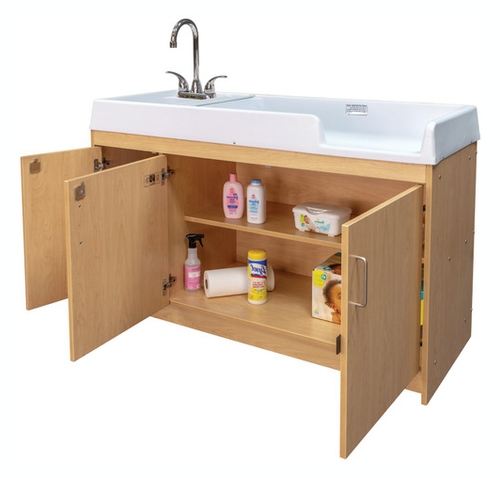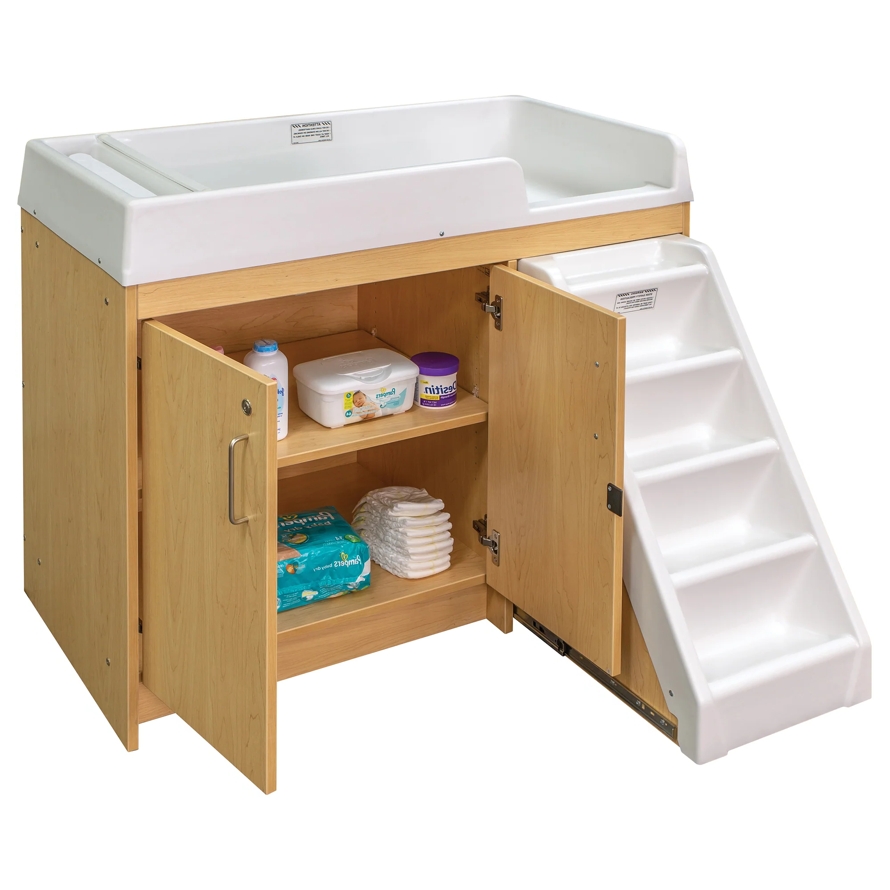Best Spots for Installing Changing Tables in a Daycare
Posted by Handy Washroom on Jan 22nd 2025
 When you enter a bustling daycare center, one feature that should stand out is the changing table. It's usually positioned for convenience and safety, and are convenient for managing the daily flow of a childcare center.
When you enter a bustling daycare center, one feature that should stand out is the changing table. It's usually positioned for convenience and safety, and are convenient for managing the daily flow of a childcare center.
If you place these tables strategically, it will optimize workflow and enhance the overall well-being of the staff and children.
The Benefits of Installing Change Tables in a Daycare
Installing changing tables in a daycare setting provides numerous benefits that enhance operational efficiency and child care quality.
Here are the key advantages:
- Changing tables provide an ergonomically designed space for children.
- They reduce the risk of accidents.
- These tables are equipped with easy-to-clean surfaces.
- They help maintain a hygienic environment and reduce the spread of infections.
- They streamlines the changing process and allow caregivers to manage diaper changes quickly.
- Change tables free up time to return to other childcare duties without significant delay.
- They demonstrate a commitment to professionalism and care, and build parental trust.
Importance of Proper Placement
Accessibility and Safety
The most important consideration of placing changing tables in a daycare is accessibility and safety.
They should be easily reachable for caregivers while ensuring that children are not left unattended.
Ideal locations are:
- Near the play areas and within sight of the main activity hubs.
- In private rooms or quiet areas for children who may need more privacy.
- Parental access rooms that allow parents to manage their children’s needs during visits.
- Weather-protected stations in outdoor enclosed spaces for convenient access during outdoor activities.
- Multipurpose rooms with fold-away changing tables to maximize space.
- Near emergency exits to integrate childcare needs into safety protocols.
These placements help in minimizing the time it takes for a caregiver to maintain continuous supervision.
Hygiene and Maintenance
Another important thing to consider with placement is hygiene. Proper placement ensures that changing tables are away from direct traffic, but ideally placed near sanitation equipment like sinks and waste cans to facilitate immediate handwashing and cleaning practices. This helps to maintain cleanliness and prevents the spread of germs within the daycare environment.
Changing tables should also be away from:
- Food preparation areas to prevent any cross-contamination.
- High-traffic zones to minimize disruptions and maintain a calm changing environment.
- Direct sunlight or heating vents to ensure the comfort and safety of the children during changes.
- Main entrances and exits to provide privacy and reduce the exposure to external elements and foot traffic.
- Loud noise sources to maintain calmness and tranquility to not startle or disturb the infants.
- Areas prone to dampness or mold to maintain a healthy and hygienic space for diaper changes.
Optimal Locations Within Daycare
 The Infant Room
The Infant Room
Consider the proximity to cribs. Installing changing tables close to cribs can make the changing process smoother and quicker. This setup reduces the distance a caregiver has to carry a baby, particularly beneficial during emergency changes.
Also consider visibility by ensuring the table is positioned where caregivers can have a clear view of the entire room. This type of placement can create an environment of safety and attentiveness, and allows for immediate response to any other children's needs. It also increases a sense of security for both children and parents, knowing that proper care and supervision are maintained.
The Toddler Room
Use a central location. For rooms that host toddlers, a centrally located changing table works best because this location supports quick access during the bustling activity characteristic of toddler care.
Consider easy storage access by ensuring ample storage for changing supplies is within arm’s reach but out of the toddlers' curious hands.
Hallways
Consider placing secondary changing stations in hallways for emergencies. These tables should be compact and foldable to save space while they're not being used, but still quite easy to access.
Design Considerations
Safety Features
Each changing table should be equipped to meet high safety standards, and include secure straps and raised edges to prevent falls. The material should be easy to clean and disinfect, and be able to support a hygienic environment. It should be built with durable construction and can withstand frequent use without deteriorating.
Ergonomics
The height of the changing tables should cater to the comfort of caregivers and prevent any back strain from frequent bending. Adjustable tables can accommodate different staff members and their varying physical needs. Consider features like padded surfaces and anti-slip mats to ensure stability during use.
Does Your Daycare Need Changing Tables?
In today's competitive childcare market, parents are increasingly looking for facilities that offer superior care environments. By proactively addressing such fundamental needs, your daycare can distinguish itself as a forward-thinking, premier choice for childcare services. Well thought-out placements support operational efficiency and underscores the attention you're willing to give to little details that matter.
For some insights into quality products for your childcare center, explore our range of childcare change tables and that will help you equip your facility with the best tools to ensure safety, efficiency, and comfort for both caregivers and children.
